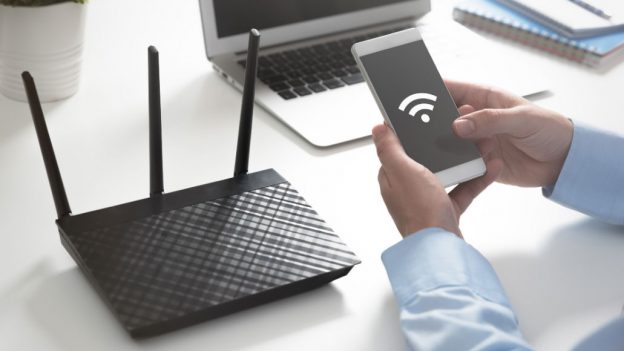Choosing between WiFi and Ethernet for your home network can be tricky. Each has its own perks and drawbacks. WiFi offers flexibility and ease of use, while Ethernet provides faster speeds and more reliable connections. To make an informed decision, it’s essential to understand the strengths and weaknesses of both options.
Key Takeaways
- WiFi offers convenience and mobility, allowing you to connect from anywhere in your home without cables.
- Ethernet provides faster and more stable connections, making it ideal for gaming and high-definition streaming.
- WiFi is generally easier to set up and works well with modern devices like smartphones and tablets.
- Ethernet is more secure than WiFi, as it is harder for hackers to intercept data transmitted via cables.
- Combining both WiFi and Ethernet in a hybrid setup can give you the best of both worlds, optimizing your home network’s performance.
Understanding the Basics of WiFi and Ethernet
What is WiFi?
WiFi is a wireless network that allows devices like phones, tablets, and computers to connect to the Internet without using cables. WiFi routers send out signals at either 2.4 GHz or 5 GHz frequencies, which devices can use to link to the web. In simple terms, WiFi provides a wireless Internet connection.
What is Ethernet?
Ethernet uses wired connections to link your home’s internet devices, such as routers, computers, and gaming consoles, directly to the internet. These physical cables provide much faster data transfer than WiFi. In fact, even your WiFi router relies on an Ethernet cable to connect to the internet initially.
Key Differences Between WiFi and Ethernet
While both WiFi and Ethernet allow you to browse the web, download files, and stream your favourite shows, there are several key differences:
- Speed: Ethernet is generally faster than WiFi. The best Ethernet cables can transfer data at up to 10 gigabits per second, while the fastest WiFi connections usually max out at a few gigabits per second.
- Consistency: Ethernet connections are more stable and less prone to interruptions compared to WiFi, which can experience latency and occasional outages.
- Security: Ethernet is more secure because it requires a physical connection, making it harder for unauthorized users to access your network. WiFi, on the other hand, broadcasts signals that can be intercepted if not properly secured.
Understanding these basics can help you decide which option is better for your home network. At VMedia, we offer solutions that cater to both WiFi and Ethernet needs, ensuring you get the best of both worlds.
Discover VMedia’s high-speed internet options to enhance your WiFi and Ethernet setup. Learn more.
Related: Slow Internet Driving You Crazy? Try These 7 Solutions
Advantages of Using WiFi for Your Home Network
Convenience and Mobility
One of the biggest advantages of WiFi is its convenience. You don’t need to worry about cables cluttering your space. Connecting a device to a WiFi network is as simple as tapping a few buttons. This makes it ideal for homes with multiple devices, such as smartphones, tablets, and laptops. You can move freely around your home without losing your internet connection.
Ease of Installation
Setting up a WiFi network is straightforward. Most modern routers come with easy-to-follow instructions, and you can have your network up and running in no time. There’s no need to run cables through walls or under floors, making it a hassle-free option for most households.
Compatibility with Modern Devices
Almost all modern devices are designed to work with WiFi. From smartphones to smart home devices, WiFi ensures that everything stays connected. This is especially important for homes with a variety of devices that need internet access.
At VMedia, we understand the importance of a reliable and convenient internet connection. Our WiFi solutions are designed to provide stable and fast internet access throughout your home, ensuring you stay connected no matter where you are.

Advantages of Using Ethernet for Your Home Network
Speed and Performance
When it comes to speed, Ethernet is the clear winner. Since your device is directly connected to the router, you can expect faster bandwidth. Ethernet also offers more consistent speeds because wired signals don’t fluctuate as easily as wireless ones. This makes it ideal for activities that require a stable connection, like online gaming or streaming high-definition content.
Reliability and Stability
Ethernet connections are known for their reliability. Unlike WiFi, which can be affected by local network congestion and physical obstructions, Ethernet provides a stable connection. This is especially important for work-from-home setups where a consistent internet connection is crucial.
Security Benefits
One of the major advantages of Ethernet over WiFi is security. With Ethernet, your data travels through a physical cable, making it less susceptible to hacking. In contrast, WiFi networks are broadcasted to the local area, which can be intercepted if not properly secured. For those who need to transmit sensitive information, Ethernet is the safer choice.
When to Choose WiFi Over Ethernet
For Mobile Devices
WiFi is the clear winner when it comes to mobile devices. Connecting a smartphone or tablet to an Ethernet cable is impractical. WiFi allows you to move freely around your home without being tethered to a cable. This makes it ideal for devices that are meant to be portable.
For General Internet Browsing
For everyday activities like checking email, browsing social media, or reading the news, WiFi is more than sufficient. The convenience of not having to deal with cables makes WiFi the preferred choice for these tasks. Plus, most modern devices are designed to work seamlessly with WiFi.
For Streaming and Casual Gaming
WiFi is also suitable for streaming videos and casual gaming. While Ethernet offers better speed and stability, WiFi is generally good enough for these activities. If you experience buffering or lag, you can always explore various internet plans in Ontario to find one that better suits your needs.
Compare VMedia’s internet plans and find the perfect solution for your home network. Click here.
When to Choose Ethernet Over WiFi
For Online Gaming
When it comes to online gaming, Ethernet is the clear winner. Gaming requires low latency and consistent speeds, which Ethernet provides better than WiFi. If you’ve ever experienced lag or delays during a game, you know how frustrating it can be. Using an Ethernet connection can help minimize these issues, giving you a smoother and more enjoyable gaming experience.
For Work-from-Home Setups
For those working from home, a stable and reliable internet connection is crucial. Ethernet offers more consistent speeds and fewer interruptions compared to WiFi. This is especially important for video conferencing, large file transfers, and other work-related tasks that require a dependable connection. By connecting your work computer directly to the router with an Ethernet cable, you can ensure that your workday goes smoothly.
For Streaming High-Definition Content
If you enjoy streaming high-definition content, Ethernet is the way to go. Streaming services like Netflix and Hulu require a lot of bandwidth, and WiFi can sometimes struggle to keep up. With an Ethernet connection, you can enjoy your favourite shows and movies without buffering or quality drops. This is particularly important if you have multiple devices streaming at the same time, as Ethernet can handle the load more efficiently.
Related: What is a Good Internet Speed? Beginner’s Guide
Cost Considerations for WiFi and Ethernet
When setting up a home network, it’s important to consider the costs associated with both WiFi and Ethernet. Each option has its own set of expenses that can impact your decision.
Initial Setup Costs
The initial setup costs for WiFi and Ethernet can vary significantly. WiFi is generally more affordable to set up because it requires fewer physical components. A basic WiFi router can be purchased at a reasonable price, and there’s no need for extensive cabling. On the other hand, setting up an Ethernet network can be more expensive. You’ll need to buy Ethernet cables, possibly a switch box, and other hardware. If your home isn’t pre-wired for Ethernet, the cost of running cables through walls can add up quickly.
Maintenance and Upkeep
Maintenance and upkeep costs also differ between WiFi and Ethernet. WiFi networks may require occasional upgrades to routers or range extenders to maintain optimal performance. These upgrades can be relatively inexpensive. In contrast, Ethernet networks are generally low-maintenance once installed, but any necessary repairs or upgrades can be more costly due to the physical nature of the setup.
Long-Term Value
When considering long-term value, both WiFi and Ethernet have their merits. WiFi offers the convenience of mobility and ease of use, which can be invaluable for households with multiple devices.
However, Ethernet provides a more stable and reliable connection, which can be crucial for activities like online gaming or working from home. Ultimately, the choice between WiFi and Ethernet will depend on your specific needs and how you balance initial costs with long-term benefits.

Combining WiFi and Ethernet for Optimal Performance
Hybrid Network Setup
Creating a hybrid network setup allows you to enjoy the benefits of both WiFi and Ethernet. By combining these two technologies, you can optimize your home network for various needs. For instance, you can use Ethernet for devices that require high speed and low latency, like gaming consoles and desktop computers, while using WiFi for mobile devices and general browsing.
Best Practices for Integration
To get the most out of a hybrid network, follow these best practices:
- Identify which devices will benefit most from Ethernet and which from WiFi.
- Use high-quality Ethernet cables to ensure maximum speed and reliability.
- Position your WiFi router centrally to provide the best coverage.
- Consider using WiFi extenders or mesh systems to eliminate dead zones.
Maximizing Network Efficiency
To maximize network efficiency, regularly update your router’s firmware and secure your network with strong passwords. Additionally, prioritize your network traffic by assigning bandwidth to critical devices. This way, you can ensure that your gaming console or work computer gets the necessary speed and stability, while other devices share the remaining bandwidth.
Conclusion
In the end, both WiFi and Ethernet have their own strengths and weaknesses. WiFi offers the convenience of mobility and ease of use, making it ideal for most everyday activities and mobile devices. On the other hand, Ethernet provides faster, more stable, and secure connections, which are crucial for activities like online gaming, streaming high-definition videos, and transferring large files.
The best approach for a home network is often a combination of both: using WiFi for general use and Ethernet for tasks that require high performance and reliability. By understanding the benefits and limitations of each, you can make an informed decision that best suits your needs.

